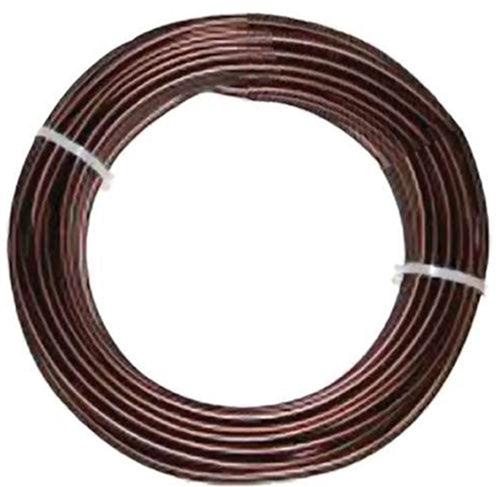
Three Larches that I recently moved from the ground into Tie Pots. You can see how the little posts and wire are used to anchor the trees. One of the best parts about this process is how quick and easy it is, and how secure the trees are in the pots. Not a millimeter of movement
Three weeks ago I potted about 50 American larches into our Tie Pots and I'm blown away by how easy it is once you get going. Using wire and the little tie posts to secure the trees is a real breakthrough. It takes less than half the time it would take to pot into conventional bonsai training pots with less disturbance to the roots.
This fall after the new roots are well developed, I'll start using the tie post for styling as well as anchoring. We'll keep you posted (no pun intended)
Continued below...

All 50 larches* plus a few others two to three weeks after transplanting into our Tie Pots. All survived and almost all resumed growing immediately. The were a handful that were a little more stressed from digging, but these are recovering nicely
*American Larch (Larix laricina), aka Tamarack here in Vermont
Continued from above...
One advantage to using the same pot and the same soil (our Professional mix) on a whole group of trees is watering is much easier, with drying down times similar from tree to tree (if you grow bonsai, you'll know that it's never 100% the same from tree to tree, but in this case, it's close).
Another great Tie Pot feature is air pruning. The next three photos from Tie Pot's facebook timeline are living proof

This photo and the follownig quote are from Tie Pots facebook timeline..."One year of air pruning – a first result. This field maple was in a Tie Pot for over a year. Time to examine the roots!
In a normal pot you would expect an Acer campestre (Field maple) to grow circling roots of up to one meter length.
In this case the air pruning worked without exception: every single root grew to a hole – as hoped. Due to contact with the dry air outside the pot, the root stopped growing in length and made side branches instead.
I loosened up the root ball and was perfectly happy with the result: a dense, fine branched root ball. Not even one root had grown excessively long.
So I trimmed the roots a little and put the tree back in the pot with a little fresh substrate. The amount of lost roots was minimal – in this case this is perfect because the tree is supposed to continue growing quickly. I did not want it to loose speed due to any disturbance of the roots.
I surely could have planted the tree in a much smaller pot at this point without weakening the tree."

Same maple from the bottom

Close up

Three larch trunks in one Tie Pot and growing strong

About half the trunk on this Larch was underground and covered with roots. Fortunately, there were just enough roots underneath the base of the trunk. Because of the extra stress, the top growth is a little behind our other larches, but it's recovering nicely. By the way, the shape of the trunk is just luck. No wire, just Mother Nature

This one is a Crabapple that I dug up this year. It's the one tree so far where I've used wire for shaping as well as stabilizing. Just one strand pulling a branch down, but it's a start

